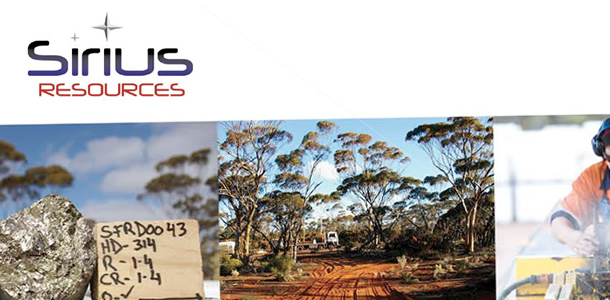
Sirius is ticking a lot of boxes. The exceptionally fast progress, the ability to use capital efficiently in signing favourable contracts from suppliers, and the exploration upside at Polar Bear (and other prospects in its 1,400 square kilometres of ground) are all highly impressive.
While much of the country lazed on the beach or yarned around the backyard barbecue on Australia Day, Sirius Resources (SIR) got cracking on Australia’s latest mine, the Nova- Bollinger nickel-copper deposit in Western Australia’s Fraser Range.
Legendary prospector Mark Creasy, who owns just under 35% of Sirius, discovered the Nova deposit in July 2012, after first noting the prospectivity of the ground when looking for fragments of the Skylab space station in 1979. The deposit is considered the best nickel sulphide deposit the world has seen since Voisey’s Bay (Canada) was found in 1993. The nearby Bollinger deposit – almost as significant – followed in February 2013.
To say the sharemarket was impressed is putting it mildly. Before Nova, Sirius was plodding along at a share price of 5 cents. After Bollinger, the shares topped out at $5.00 – making the stock the proverbial “100-bagger.”
But since then, Sirius has moved impressively quickly to get the deposit to the mining stage, which formally began on Australia Day. Sirius is looking at an initial mine life of at least ten years, and there is strong exploration upside: in July last year, the company announced that the first drill hole into a prospect known as Polar Bear, located near the WA town of Norseman, had struck more massive nickel sulphides, similar to those found at Nova.
Sirius is funding the mine through a $440 million syndicated facility agreement, which allows it to retain the bulk of its $244 million in cash for project development and exploration.
Although nickel – like all commodities – has been hit hard recently, Sirius has actually turned the commodity downturn to its advantage: it has managed to strip $30 million – or 6% – from its expected capital spend at Nova, after a series of contracts and tenders came in lower than first expected, reflecting the high competition among mining services companies in the current environment, where new developments are scarce.
The company said the cost savings to date reflected the high competition among mining services companies in the current climate, where few new developments are in the pipeline. Mining contractor Barminco won the job, under a three-year contract valued at $129 million, which will see it working for about three months on excavating the pit, before moving on to the underground decline. Sirius expects to make even more savings once in operation.
The total resource estimate stands at 14.6Mt @ 2.2% nickel, 0.9% copper and 0.08% cobalt, for 325,000 tonnes of nickel, 134,000 tonnes of copper and 11,000 tonnes of cobalt, with an initial ten-year mine life, producing close to $10.5 billion worth of nickel. The scoping study estimated production rates at 28,000 tonnes a year of nickel, 11,000 tonnes a year of copper and 940 tonnes a year of cobalt, in concentrate.
That would be enough to rank Sirius between the tenth-largest and 14th-largest producer in the world: the company says it will be the eighth-lowest-cost nickel producer. First production is expected in mid-2016.
The Polar Bear project – about 80 kilometres from the Nova mine-site – increases the upside potential. The company says the high-grade massive nickel sulphide mineralisation it struck at Polar Bear last July was accompanied by significant levels of copper, cobalt, platinum and palladium. The Polar Bear ground contains the extensions of the Kambalda and Widgiemooltha ultramafic stratigraphy, which hosts world-class nickel sulphide mines along strike to the north.
Then, in January, Sirius reported encouraging drilling results from the Baloo gold prospect at Polar Bear, saying it had encountered a significant zone of gold mineralisation, the best such zone yet identified on the Polar Bear project. The strike is 10 kilometres from the historic Higginsville gold mine, where past gold production and current gold resources total 3 million ounces.
Sirius is ticking a lot of boxes. The exceptionally fast progress, the ability to use capital efficiently in signing favourable contracts from suppliers, and the exploration upside at Polar Bear (and other prospects in its 1,400 square kilometres of ground) are all highly impressive. Certainly the brokers that follow Sirius Resources are bullish on the stock: they have a consensus price target of $3.55 on the stock, 29% above the current price of $2.75. As Sirius advances the project further, investors can expect the stock to be re-rated higher.







